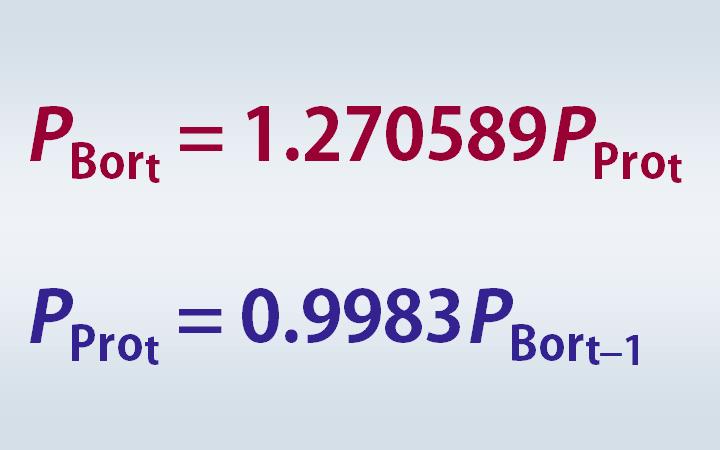The $1 million textbook
 Last year, an academic discovered that the only two firms on Amazon selling new copies of a classic biology textbook were charging well over $1 million (plus $3.99 for shipping!). Furthermore, when he checked the next day, prices had risen even further to nearly $2.8 million! Intrigued by this strange pricing behaviour, he started to investigate the prices further.
Last year, an academic discovered that the only two firms on Amazon selling new copies of a classic biology textbook were charging well over $1 million (plus $3.99 for shipping!). Furthermore, when he checked the next day, prices had risen even further to nearly $2.8 million! Intrigued by this strange pricing behaviour, he started to investigate the prices further.
In oligopoly markets with a small number of players, firms must make strategic decisions taking into account how they expect their rivals will react. One option in today’s online market places is for firms to use computer algorithms which automatically adjust their prices according to the prices their rivals are charging. The results of his investigation suggested that this was exactly what was causing the prices for this textbook to be so high.
One of the firms appeared to adopt a pricing rule which set its price at 0.9983 times the price of the other firm. This seems to make sense – this firm wants to undercut its rival in order to be more likely to sell its copy. However, if both firms operated under this strategy, we would expect to see prices falling over time (see also). In contrast, the strategy of the other firm appeared to be to price 1.270589 above its rival’s price. Why would it want to try to make sure it was always more expensive that its rival? The academic’s plausible explanation was that:
“…they do not actually possess the book. Rather, they noticed that someone else listed a copy for sale, and so they put it up as well – relying on their better feedback record to attract buyers. But, of course, if someone actually orders the book, they have to get it – so they have to set their price significantly higher – say 1.27059 times higher – than the price they’d have to pay to get the book elsewhere.”
Put both of these pricing rules together and prices will continuously rise over time! This was exactly what the academic observed for over a week, until human intervention appears to have returned prices to a more sensible level.
As Tim Harford discusses in his recent blog post, it had been hoped that online market places would result in very low prices because the high degree of price transparency increases competition. Clearly the prices Amazon was initially charging for the textbook didn’t support this theory and even after human intervention prices would seem to be well above marginal production costs. However, as the blog post goes on to explain, we should not necessarily expect price transparency always to lead to low prices. Economic theory shows us that in oligopoly markets, when a small number of players interact repeatedly, they may be able to collude tacitly on high prices. Furthermore, a high degree of price transparency may help such collusive behaviour because it makes it easier for firms to detect cheating by a rival.
Amazon’s $23,698,655.93 Book About Flies (SCREENSHOT) The Huffington Post, Steven Hoffer (26/04/11)
Questions
- What are the key features of competition between book sellers on Amazon?
- What price setting rule would the two firms have to use for prices to continuously fall over time? Provide an illustrative example.
- What are the pros and cons for a firm of relying on a computer algorithm to set its prices?
- How might a firm program its price setting algorithm if it wanted to collude tacitly with its rivals?
- Can you think of any other explanations for the pricing strategies that the two Amazon sellers adopted?